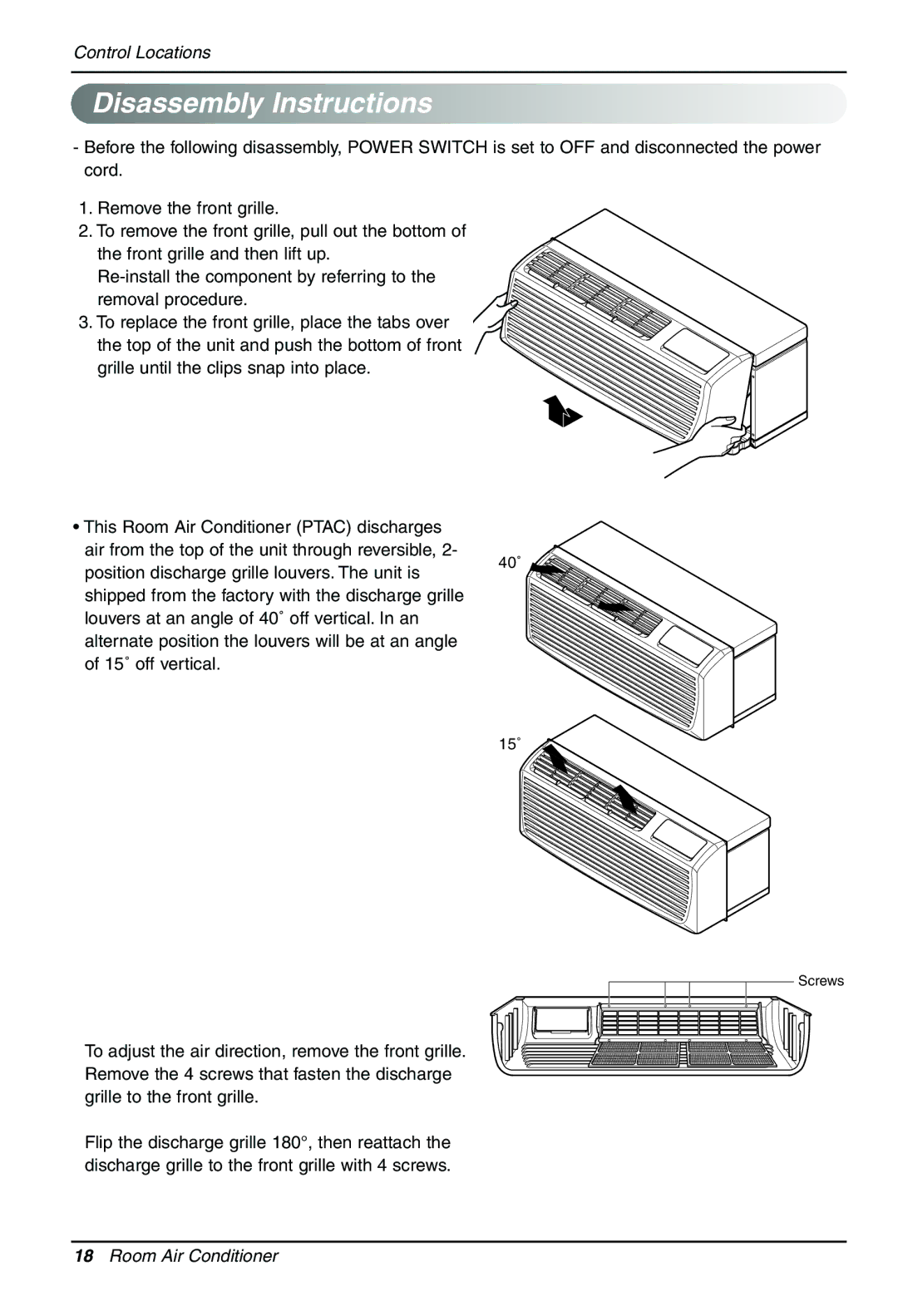PACKAGED TERMINAL AIR CONDITIONER/HEAT PUMP specifications
LG Electronics is a leading name in the HVAC industry, well-known for its innovative solutions such as the Packaged Terminal Air Conditioner/Heat Pump (PTAC/HP). The PTAC units from LG are designed to deliver efficient heating and cooling in a compact form, making them ideal for hotels, healthcare facilities, and residential applications.One of the main features of LG's PTAC units is their self-contained system, which allows for easy installation and maintenance. The units are designed to fit into a standard wall sleeve, which simplifies the replacement process in existing buildings. LG offers a range of models, with cooling capacities typically ranging from 7,000 to 15,000 BTU; this ensures that users can select the perfect size for their specific requirements.
Efficiency is a hallmark of LG’s PTAC models, with many units rated with high Energy Efficiency Ratios (EER) and Seasonal Energy Efficiency Ratios (SEER). This efficiency not only results in lower energy bills but also contributes to a more sustainable operation, aligning with modern environmental standards. Some advanced models feature inverter technology, which allows for variable speed control of the compressor, significantly reducing energy consumption while providing optimal comfort levels.
The PTAC units come equipped with a multi-functional remote control, allowing for convenient operation without the need to manually adjust settings. This user-friendly feature helps to improve the overall comfort experience for guests or residents. Additionally, LG’s units often include a gold fin coating on the coils to resist corrosion, ensuring longevity and reliability even in harsh environments.
A notable characteristic of LG’s PTAC/HP units is their silent operation. Designed to minimize noise disruption, these units are perfect for settings where peace and quiet are paramount, such as hotels and bedrooms. Furthermore, many models feature a "sleep mode" function, which subtly adjusts the temperature while minimizing noise during nighttime hours.
LG also prioritizes indoor air quality, integrating advanced filtration systems that help capture dust and allergens, promoting a healthier indoor environment. The units are designed to provide consistent airflow, ensuring even temperature distribution and enhancing overall comfort.
In conclusion, LG Electronics Packaged Terminal Air Conditioner/Heat Pump units represent a perfect blend of efficiency, comfort, and convenience, making them a top choice for various applications. Their self-contained design, energy-saving technologies, and user-friendly features ensure that they are suitable for a wide range of indoor climates, meeting the modern demands of energy-conscious consumers.

